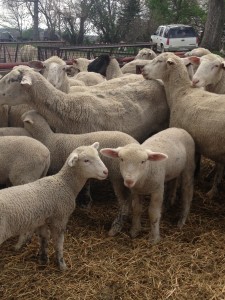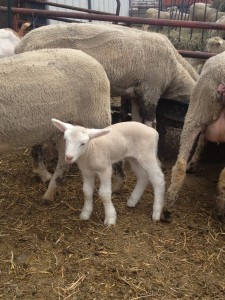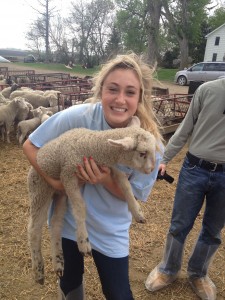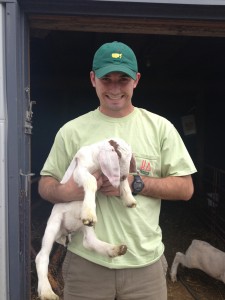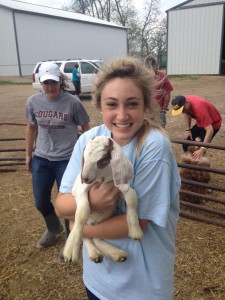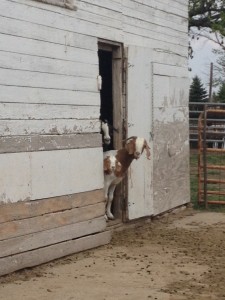It’s no surprise that today was my favorite excursion to date. The Ubben Farm didn’t disappoint with its tiny chickens, strutting turkeys, and strange-looking African birds. They, however, were not the objects my interest. My long-time obsession with sheep was only intensified after spending time with Ubben’s herd of sheep. Only born two months ago, the lambs were still quite small. Curious and trusting, they would come right up to us, some even letting us hold them. One in particular followed me around until we sadly had to leave. Despite wishing I could spend all day with the precious lambs, I did want to see the rest of their animal facilities. Their farm was so unlike any other animal production farm that we had seen up to this point. Every animal is free-range, with space to walk and roam as they please. After touring so many confinement facilities, it was incredibly refreshing to see conditions in which the animals were able to simply walk around, and even have the opportunity to move from inside a structure to outside. The Ubben’s version of a four-letter word is hog barns, and I definitely understood why after seeing their gestation field. That’s right, I said field…not stall…not crate…not room. After asking Mr. Ubben about the rate of piglet mortality due to being rolled on by their mothers, he replied with an answer that shocked me. I asked this specific question because confinement farmers use this danger as a justification for placing sows in the gestation stalls…to protect the piglets. Yet, when I asked Mr. Ubben if there was any increased danger since their gestation “huts” that he provided didn’t have any rigging to keep the sows upright. He replied that yes he has lost some to rolling, but the numbers are actually quite low. They had only lost one piglet in the last farrowing rotation. Remembering the Friest’s farm, the numbers seemed to be much higher. By now, we have seen just about every form of pig farming available – from the Friests’ to hearing from the Pork Association all the way to the Ubben’s free-range style. On the one hand, the confinement had made perfect sense when Mr. Friest explained the inner workings and disproved the misconceptions. His hogs showed no inkling of discontent or unhappiness. Regardless of the pigs’ happiness, I’m of the belief that they are animals, and should be treated as such. I certainly believe there is a respect animals deserve, but it isn’t quite to the level that many animal activists attribute them.
But on the other hand, upon visiting the Ubben’s farm, we saw the sprawling fields for widespread grazing seemed to almost argue for itself. Surely living out in nature like they were created to do seems better for the animals. So, which method is better? The Friests are most certainly in it for the money. Their sheer efficiency and systematic operations prove their motivation. And the Ubbens? Well, according to them, they’re making money as well. Their hog market contract with Niman Ranch demands the free-range style, and they even shared with us that they’re barely keeping up with demand. More and more people these days, they said, are wanting free-range animal products. While I love this concept, is it feasible for large scale production? Everywhere we go, we constantly hear “Feed the World,” but could the Ubben’s, and farmers like them, feed the world?